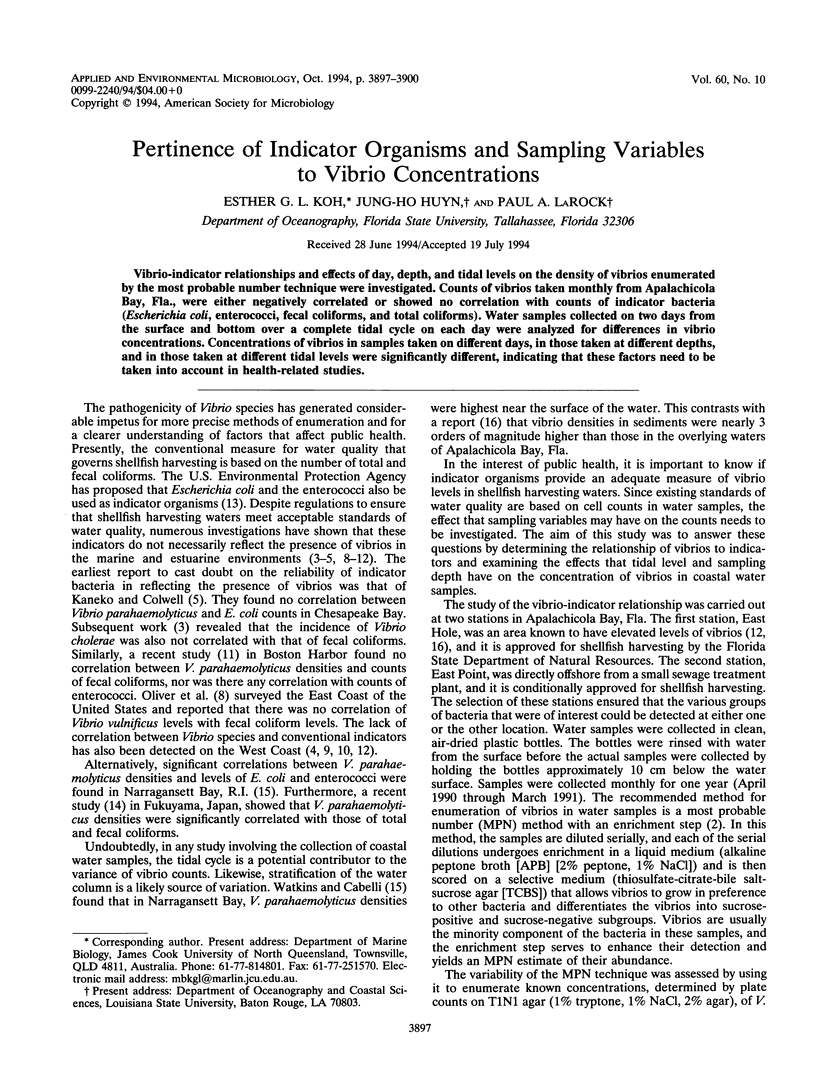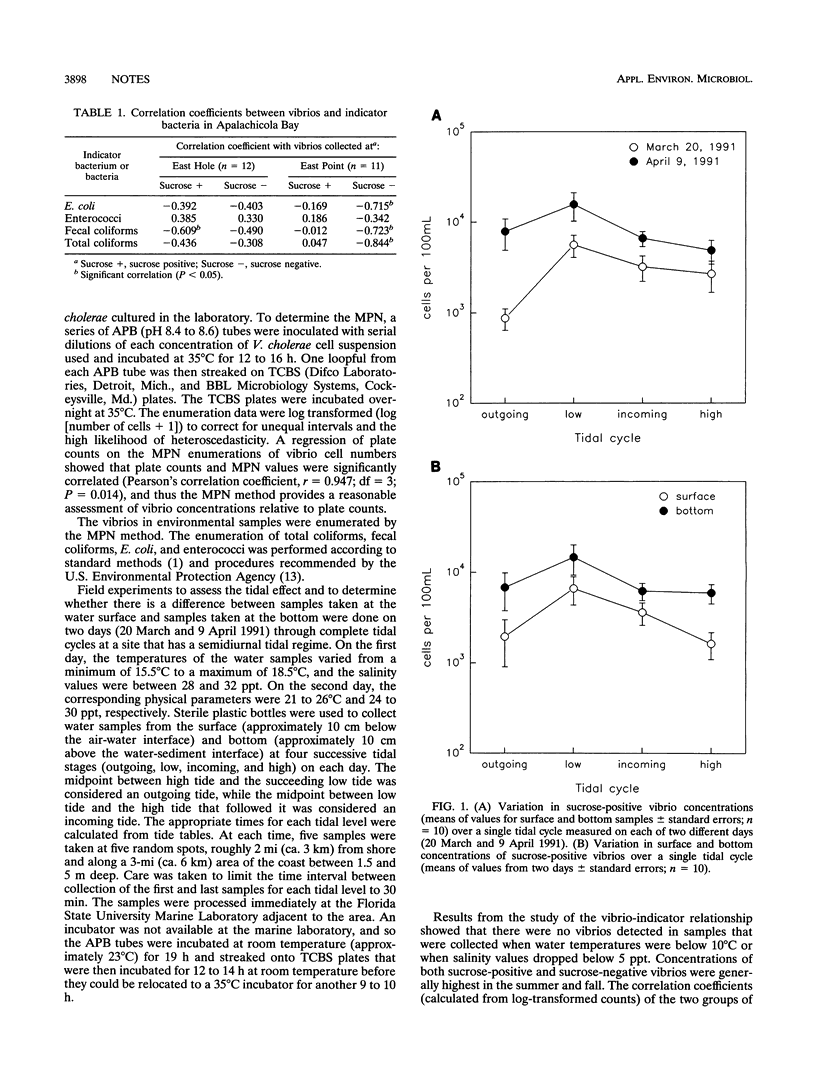Abstract
Vibrio-indicator relationships and effects of day, depth, and tidal levels on the density of vibrios enumerated by the most probable number technique were investigated. Counts of vibrios taken monthly from Apalachicola Bay, Fla., were either negatively correlated or showed no correlation with counts of indicator bacteria (Escherichia coli, enterococci, fecal coliforms, and total coliforms). Water samples collected on two days from the surface and bottom over a complete tidal cycle on each day were analyzed for differences in vibrio concentrations. Concentrations of vibrios in samples taken on different days, in those taken at different depths, and in those taken at different tidal levels were significantly different, indicating that these factors need to be taken into account in health-related studies.
Full text
PDF



Selected References
These references are in PubMed. This may not be the complete list of references from this article.
- Colwell R. R., Kaper J., Joseph S. W. Vibrio cholerae, Vibrio parahaemolyticus, and other vibrios: occurrence and distribution in Chesapeake Bay. Science. 1977 Oct 28;198(4315):394–396. [PubMed] [Google Scholar]
- Kaneko T., Colwell R. R. Ecology of Vibrio parahaemolyticus in Chesapeake Bay. J Bacteriol. 1973 Jan;113(1):24–32. doi: 10.1128/jb.113.1.24-32.1973. [DOI] [PMC free article] [PubMed] [Google Scholar]
- Kelly M. T. Effect of temperature and salinity on Vibrio (Beneckea) vulnificus occurrence in a Gulf Coast environment. Appl Environ Microbiol. 1982 Oct;44(4):820–824. doi: 10.1128/aem.44.4.820-824.1982. [DOI] [PMC free article] [PubMed] [Google Scholar]
- Oliver J. D., Warner R. A., Cleland D. R. Distribution of Vibrio vulnificus and other lactose-fermenting vibrios in the marine environment. Appl Environ Microbiol. 1983 Mar;45(3):985–998. doi: 10.1128/aem.45.3.985-998.1983. [DOI] [PMC free article] [PubMed] [Google Scholar]
- Shiaris M. P., Rex A. C., Pettibone G. W., Keay K., McManus P., Rex M. A., Ebersole J., Gallagher E. Distribution of indicator bacteria and Vibrio parahaemolyticus in sewage-polluted intertidal sediments. Appl Environ Microbiol. 1987 Aug;53(8):1756–1761. doi: 10.1128/aem.53.8.1756-1761.1987. [DOI] [PMC free article] [PubMed] [Google Scholar]
- Tamplin M., Rodrick G. E., Blake N. J., Cuba T. Isolation and characterization of Vibrio vulnificus from two Florida estuaries. Appl Environ Microbiol. 1982 Dec;44(6):1466–1470. doi: 10.1128/aem.44.6.1466-1470.1982. [DOI] [PMC free article] [PubMed] [Google Scholar]
- Watkins W. D., Cabelli V. J. Effect of fecal pollution on Vibrio parahaemolyticus densities in an estuarine environment. Appl Environ Microbiol. 1985 May;49(5):1307–1313. doi: 10.1128/aem.49.5.1307-1313.1985. [DOI] [PMC free article] [PubMed] [Google Scholar]
- Williams L. A., Larock P. A. Temporal Occurrence of Vibrio Species and Aeromonas hydrophila in Estuarine Sediments. Appl Environ Microbiol. 1985 Dec;50(6):1490–1495. doi: 10.1128/aem.50.6.1490-1495.1985. [DOI] [PMC free article] [PubMed] [Google Scholar]


